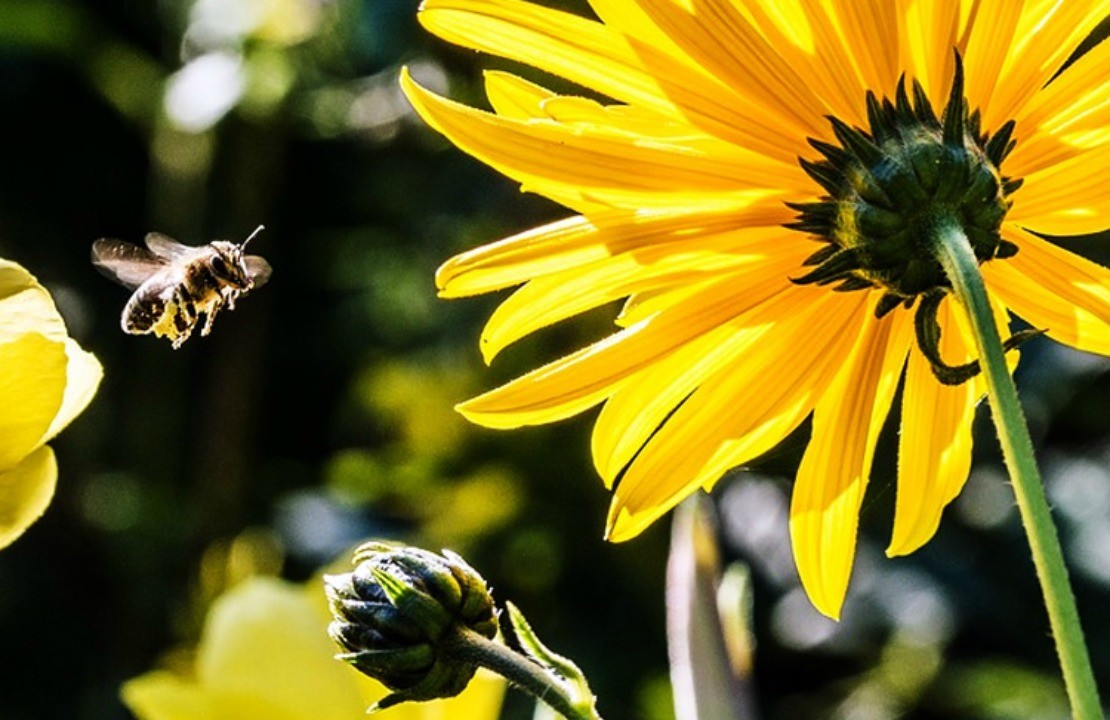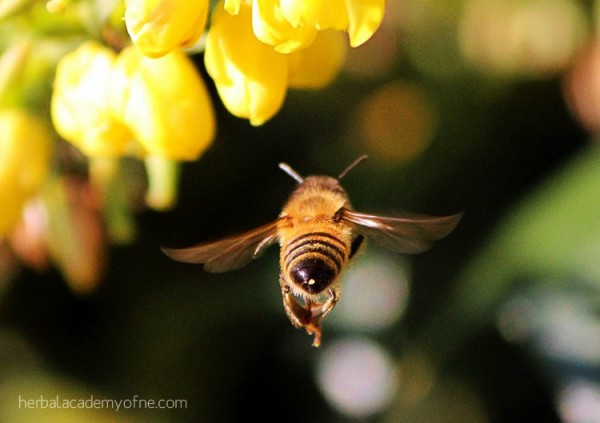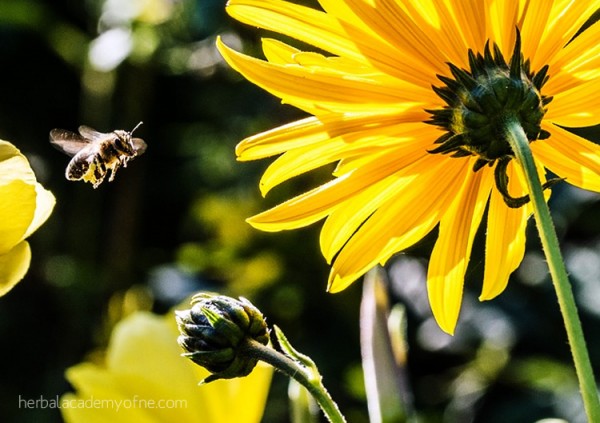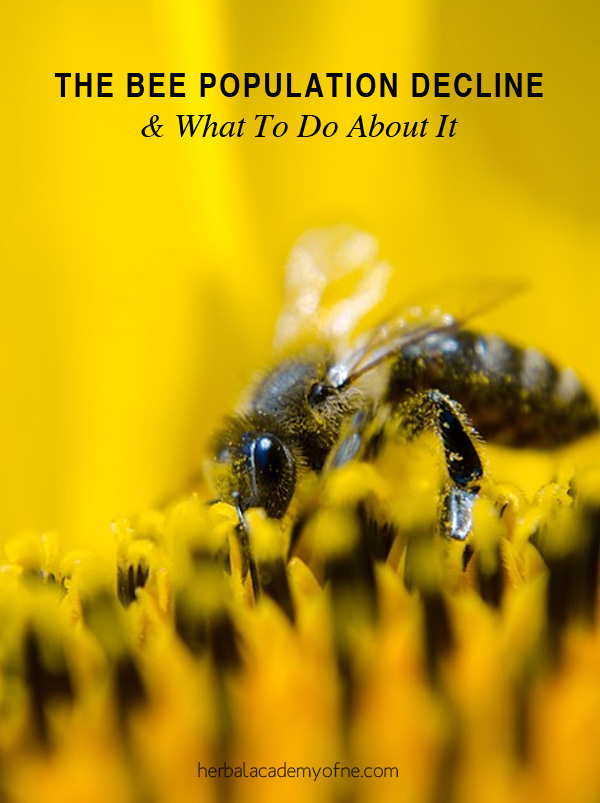
Bee Informed: The Bee Population Decline and What To Do About It
There are blares from car horns in the lines of traffic that stretch endlessly along paths of asphalt. We travel to and fro: to work, to school and to leisure. The sights, scents and sounds of everyday life consumes us, leaving little time or energy to notice the natural world that teems around us. We are human and we populate this earth with over 7 billion strong.
But the fact remains, we are greatly outnumbered. There are over 200 million insects per every human being making insects the most populous organism to inhabit this planet. Insects pollinate one third of the world’s crops and United States crops are 80% dependent on the honeybee for pollination. And yet we find ourselves facing a declining honeybee population of epic proportions.
In the 1950’s, the honeybee population numbered 5 million strong, while today despite the advent of improved farming methods and technology, the bee population has dwindled to 2.5 million. A significant loss considering that one out of every three bites of food has been pollinated by a honeybee.
What has brought us to this point? And more importantly, what can we do about it?
Bees and Flowers
First let us look at the complex relationship between bees and flowering plants. Bees forage for nectar from a variety of trees, plants, and herbs. From the beginning of spring and through the fall, depending on your region, bees forage. White clover is one of the largest sources of nectar for the bee in North America; its stems contain over 80 percent nectar.
The bee sips nectar through her proboscis or tongue to carry back to the hive. During this process, pollen attaches to the bee’s fine short hair by an electrostatic charge. Pollination occurs when pollen is retrieved from the stamen (male part) of the flower and passed to the stigma (female part) of the flower by the bee seeking nectar sources. The bee combs through the fine hairs and packs the pollen into the evolutionary indentations on the honeybee’s hind leg and carries it back to the hive.
In order to rear brood (young bees), the larvae is fed a form of masticated bee bread made from pollen. Pollen contains the protein source needed to ensure the survival of the young. The protein count in pollen varies from plant to plants. High protein counts are found in canola and almond crops and low in blackberry, willow, and sunflower.
Carbohydrates or energy needed to sustain the adult bees comes from honey, which is made through a process of nectar evaporation. Nectar is packed into the cells of the comb and capped once it reaches the proper humidity making it virtually un-spoilable.

A single bee can carry 35% of its body weight and pollen back to the hive, and it always makes me smile when I see my bees listing back to the hives loaded down with multi-colored pollen packs.
In order for a hive to thrive, populations must soar. By fall, a healthy hive can contain 40-50,000 bees. For this to happen, a reliable food source must be available.
The Bee Population Decline
Colony Collapse Disorder and Neonicotinoids
There are a number of problems that interfere with the honeybee’s viability. CCD (colony collapse disorder) was first noticed in 2006 and is characterized by the absence of adult bees even with the presence of a viable Queen. The finger of blame for CCD has been pointed towards many causative agents, the number one being pesticides, specifically neonicotinoids.
Neonicotinoids are systemic pesticides invented in the 1980’s by the Shell Corporation. They were designed to provide less contact to mammals and therefore less side effects than organophosphates. There are many theories on the safety of these pesticides. Last year, the EU made the unprecedented move to ban the use of neonics for two years in order to study their safety.
Three quarters of the world’s food crops require insect pollination. The side effects of pesticides are being closely monitored for their long-term effect on the honeybee’s population. When a bee carries pollen from a neonicotinoid plant back to the hive, it is believed that over time, low level exposure affects the bee’s longevity and ability to raise brood.
The Varroa Mite
Another factor is the varroa mite, a transmitting parasite that attaches to the young larvae causing deformity in the form of misshapen wings in the young, effectively rendering their ability to forage. Nosema, a gut virus can be another factor. Found in older bees, the virus causes them to simply fly away to die leaving the hive without adequate foragers.
Mono-agriculture
The concept of mono-agriculture has expanded rapidly since the 1950’s. Vast acres of a single crop has severely limited the bee’s natural foraging opportunities. Transporting the bees to pollinate these single crops is commonplace into modern agriculture. Re-locating bees is stressful and over time weakens the bee’s nature ability to stave off the aforementioned diseases.

There are many factors facing the survival of the modern day honey bee. As humans, busy with our everyday life, we may be tempted to overlook these vital insects and other important pollinators. But without bees, our grocery stores would be virtually empty of many fruits and vegetables. A call to action is necessary to ensure their survival.
Here’s What You Can Do
- Consider becoming a beekeeper or adding a garden hive. Beekeeping is a fun and educational hobby for the whole family. Get involved with your local beekeeping association for classes and educational activities.
- Grow bee-friendly plants and flowers. Choose plants with staggered blooming times to ensure a variety of natural foraging opportunities.
- Take part in discussions on a national level. Understand the use of pesticides and its impact on bees and other pollinators.
- Support organic, local agriculture.
- Above all, Bee-Informed! One person can make a difference. The spice of life is a rich, colorful tapestry of many organisms and we must be good stewards. Facilitating their survival ensures our own.
For even more tips for helping the honeybees, please visit this post.
Rebecca O’Bea is a beekeeper and avid gardener from Kansas. A budding herbalist and student at HANE, she can be found most days knee-deep in compost and blogging about her daily life at The Bee Queen.
REFERENCES
http://www.theguardian.com/environment/2014/jan/29/bees-pollen-pesticides-ban








